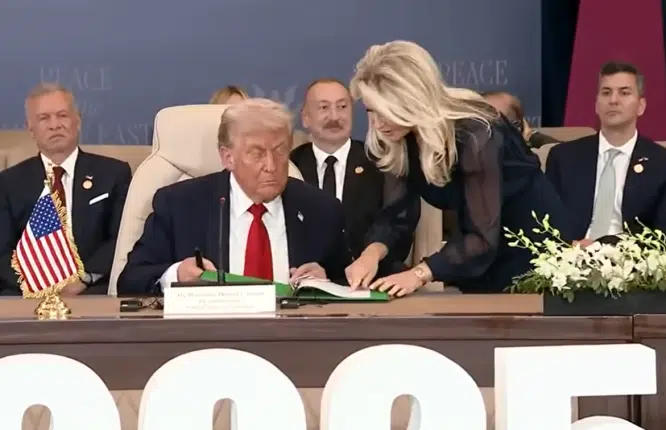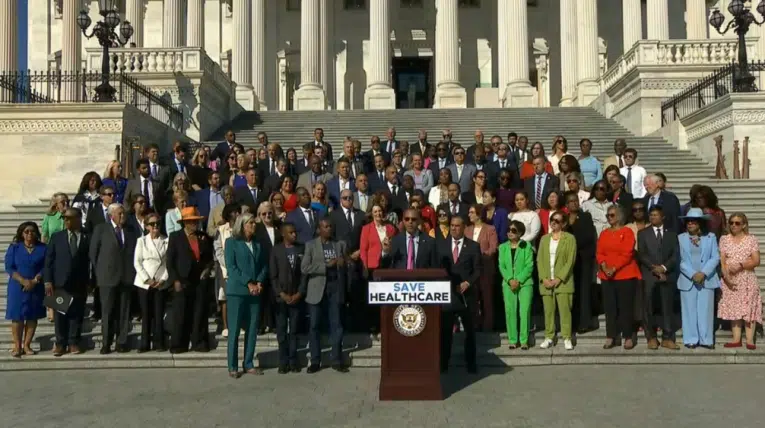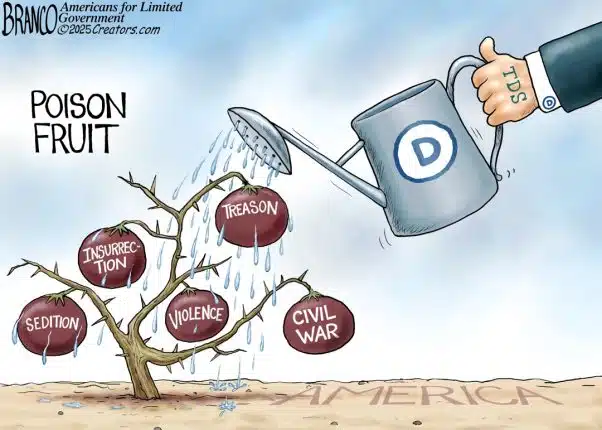Summary
Americans for Limited Government has undertaken an analysis of provisions in the Dodd-Frank financial sector takeover bill, HR 4173. The analysis shows that the provisions creates a revolving “orderly liquidation fund,” with unlimited bailout-takeover authority rife for abuse. This federal authority will endanger companies across the nation with unlimited government takeovers of their assets, operations, and ownership.
HR 4173 would:
- Authorize the Federal Deposit Insurance Corporation, Federal Reserve, and the Treasury Secretary to put into receivership any company that is deemed to be in danger of default that is “predominantly engaged in activities… that are financial in nature,” except for Fannie Mae, Freddie Mac, any other Federal Home Loan Bank, any governmental entity, or a Farm Credit System institution.
- Authorize the Federal Reserve and Treasury Secretary the power to define what constitutes “financial” activities.
- Authorize the Federal Reserve to declare a company or institution a “non-bank financial company” subject to seizure under the “orderly liquidation fund.”
- Authorize the FDIC to issue securities to be sold to the Treasury Secretary of seized firms, and the Secretary to keep or sell those securities.
- Authorize the FDIC to reorganize a seized company as a “bridge financial company,” fully recapitalize it with moneys from the “orderly liquidation fund”, and then even sell it to creditors who were fully bailed out by the fund.
- Authorize the FDIC to levy assessments on about 60 bank holding and insurance companies totaling $50 billion or more in consolidated assets to finance an unlimited “orderly liquidation fund.”
- Have no limit on how much money could flow through the “orderly liquidation fund” in total.
- Require no Congressional authorization for firms to be seized, the funds to be spent, or new assessments to be levied by the FDIC to replenish the fund.
- Would shield from judicial review any government seizure of a company: “no court shall have jurisdiction over… any claim or action for payment from, or any action seeking a determination of rights with respect to, the assets of any covered financial company for which the Corporation has been appointed receiver, including any assets which the Corporation may acquire from itself as such receiver.”
Power to Seize
Under the Dodd-Frank Conference Report, the federal government could seize any company it chooses under an unlimited “orderly liquidation” fund[1]. There will also be no limit on how much money can flow through the fund, and can be used by the Federal Deposit Insurance Corporation (FDIC) either to save politically-favored institutions deemed “too big to fail,” or to seize financial institutions and other entities deemed by the Federal Reserve to be “predominantly engaged in activities that the Board of Governors has determined are financial in nature.”[2]
No company could be deemed to be “predominantly engaged in activities that the Board of Governors has determined are financial in nature or incidental thereto for purposes of section 4(k) of the Bank Holding Company Act of 1956… [unless] the annual gross revenues derived by the company and all of its subsidiaries from activities that are financial in nature… represents 85 percent or more of the consolidated annual gross revenues of the company… or the consolidated assets of the company and all of its subsidiaries related to activities that are financial in nature… represents 85 percent or more of the consolidated assets of the company.”[3]
Although limiting compared to the Senate-passed version of the legislation, there still remains a loophole wherein any company could be deemed “financial in nature.” In accordance with Section 4(k) of the Bank Holding Company Act of 1956[4], any activity can be deemed “financial” by the Fed’s Board of Governors that the Treasury Secretary does not object to, or that the Secretary recommends and the Board approves.
That means the Fed and Treasury Secretary would still have the power to determine which companies fall under the terms of the legislation, and which do not, depending on which activities they together determine to be financial in nature, or incidental thereto. Because of the broad authorities involved, any company or institution in the entire country could be deemed “financial” in nature and subject to seizure by the FDIC because it might default at some point in the future.
Under Section 113 of the bill[5], by a two-thirds vote of the Federal Reserve Board of Governors, including the Chairman, a company can be deemed a “non-bank financial company” subject to seizure under the “orderly liquidation fund.”
The bill allows that a firm can be put into receivership by a recommendation of two-thirds of the Federal Reserve Board of Governors and the FDIC Board of Directors, and determination by the Treasury Secretary[6] that “the financial company is in default or in danger of default; [and] the failure of the financial company and its resolution under otherwise applicable Federal or State law would have serious adverse effects on financial stability in the United States…”[7]
In order to be seized, a firm need not be in danger of failing. All that is required is that the firm be deemed by the FDIC, Federal Reserve, and Treasury Secretary to be in default or “in danger of default.”[8] Under these terms, a firm could be seized without just cause.
According to the bill, shareholders would be the last to be compensated for any government seizure, as the bill ensures that “shareholders of a covered financial company do not receive payment until after all other claims and the Fund are fully paid.”[9] If a company were wrongly placed under receivership under a false basis, investor assets could be liquidated without any compensation, raising serious Fifth Amendment property rights concerns.
Additionally, the bill provides for the FDIC to operate any company while in receivership[10], taking on the characteristics of a Chapter 11 reorganization, except that it can be fully financed by the Fund. This would include all staffing decisions and the composition of the board of directors: “ensure that management responsible for the failed condition of the covered financial company is removed”.[11]
The bill also provides for a seized company to be reorganized by the FDIC as a “bridge financial company,” whose board of directors is appointed by the FDIC, and the ownership of the company transferred to the new company by the FDIC.[12] The new company, at the discretion of the FDIC, can issue then issue stock and securities.[13]
In the absence of outside capitalization, the FDIC can fully recapitalize the new company: “Upon the organization of a bridge financial company, and thereafter as the [FDIC] may, in its discretion, determine to be necessary or advisable, the [FDIC] may make available to the bridge financial company… funds for the operation of the bridge financial company in lieu of capital.”[14]
The bridge financial company would be terminated after two years by the FDIC, or could be kept in effect for a period of up to five years at the discretion of the FDIC.[15]
The bridge financial company is terminated upon either the merger or consolidation of the bridge financial company with another company, through the sale of a majority of the capital stock of the bridge financial company to another company at the discretion of the FDIC, the sale of 80 percent of the capital stock to a person other than the FDIC or another bridge financial company, the assumption of all of the assets or liabilities of the bridge financial company by another company, or the expiration of the 2-5 year period.[16]
Conceivably, when the FDIC seizes a company, it could use the Fund to fully pay back all outstanding liabilities to the company’s creditors, turn the company into a bridge financial company, fully recapitalize it with financing from the Fund, and then sell the capital stock to those very same creditors that were bailed with the Fund. That’s a bailout, and the so-called taxpayer “protections” [17] do not remove any of these provisions.
Notably, the legislation explicitly prohibits the liquidation of Fannie Mae, Freddie Mac, any other Federal Home Loan Bank, any governmental entity, or a Farm Credit System institution.[18] Specifically, the Fannie and Freddie exemption under the bill derives from the provision that “The term ‘financial company’ means any company that… is not … a regulated entity, as defined under section 1303(20) of the Federal Housing Enterprises Financial Safety and Soundness Act of 1992 (12 U.S.C. 4502(20)).” Regulated entities under 12 U.S.C. 4502 (20) include Fannie Mae and Freddie Mac.[19]
The unlimited “orderly liquidation fund” would be financed by “risk-based” assessments levied by the FDIC on institutions totaling $50 billion or more in assets, [20] proceeds from securities issued by the FDIC of seized firms, interest and other earnings from investments owned by the fund, and “repayments to the Corporation by covered financial companies.” [21]
According to a Congressional Budget Office (CBO) analysis of a similar bank tax proposal by the Obama Administration, “the ultimate cost of a tax or fee is not necessarily borne by the entity that writes the check to the government. The cost of the proposed fee would ultimately be borne to varying degrees by an institution’s customers, employees, and investors, but the precise incidence among those groups is uncertain.”[22]
This means that assessments would actually be paid for by savers and consumers through indirect taxation of higher bank fees and other financial transaction costs. Whatever else could not be taxed could be borrowed from the Federal Reserve to cover the costs of the assessments.
According to the CBO analysis, the bank assessments would apply to approximately 60 bank holding and insurance companies with $50 billion or more in assets.
The bill would authorize the FDIC and Treasury Secretary to invest portions of the fund into treasuries and other agency securities, earning interest for the fund. The fund could also issue securities for sale to the Treasury of any seized firm. The Treasury could then keep the securities, earning interest, or sell them.
The two likely outcomes are nationalized companies that the government keeps, and companies not kept would be sold to the very financial institutions charged with financing the fund (through indirect taxes on customers and savers). Thus, the fund could be wielded by the government to knock out competitors to politically-favored institutions, redistributing their assets.
Although the bill provides that the assessments may be charged to the bailed out or seized company to recoup the costs of the bailout or takeover, the bill excludes from repayment of bailout funds any “payments or amounts necessary to initiate and continue operations essential to implementation of the receivership or any bridge financial company”.[23]
Those funds would be drawn from FDIC-levied assessments on the $50 billion or greater companies. This feature necessarily provides for bailouts, and makes the fund unlimited and permanent, because as it is used up, the FDIC can just charge the banks more assessments without any Congressional approval to bail out or seize more companies.
Making matters worse, the bill would shield from judicial review any government seizure of a company: “no court shall have jurisdiction over… any claim or action for payment from, or any action seeking a determination of rights with respect to, the assets of any covered financial company for which the Corporation has been appointed receiver, including any assets which the Corporation may acquire from itself as such receiver.”[24] This, despite the obvious violation of Fifth Amendment property rights.
Conclusion
Since the Dodd-Frank Conference Report, in effect, gives the government unlimited power to levy taxes, seize companies, and redistribute wealth without any Congressional approval, it will lead the U.S. down a rabbit hole of expanded government power over both small and large players in the private sector. Every business in America is affected by the financial services industry, and the vast expansion of taxes, fees, and regulations imposed by the Dodd bill upon this industry will lead to increased financial hardship, misery, and despair.
Even with changes that were made prior to the conference report, the unlimited “orderly liquidation fund” still has not been removed from the bill, leaving in place the significant expansion of government authority to place companies into receivership, and to nationalize them, bail them out, or redistribute their assets. The unfettered power to seize companies is the more ominous provision than the mechanism which funds it, even though it is unlimited. The fact that neither authorities have been removed, however, makes the prospect for abuse of the controversial provisions practically unlimited.
The speed with which this legislation is moving through Congress should be of grave concern to all citizens concerned about their rights to control their own financial affairs and their private property. The Conference Report is currently under full consideration by both the House and Senate, and could be adopted prior to the July 4th break.
[1] pp. 347-356 of Dodd-Frank Conference Report at http://financialservices.house.gov/Key_Issues/Financial_Regulatory_Reform/conference_report_FINAL.pdf
[2] pp. 170 of Dodd-Frank Conference Report.
[3] pp. 30-31 of Dodd- Frank Conference Report.
[4] http://www.docstoc.com/docs/853296/Bank-Holding-Company-Act-Section-4%28k%29/
[5] pp. 46-59 of Dodd-Frank Conference Report.
[6] pp. 188-200 of Dodd-Frank Conference Report.
[7] pp. 192 of Dodd-Frank Conference Report.
[8] pp. 190 and pp. 192 of Dodd-Frank Conference Report.
[9] pp. 212 of Dodd-Frank Conference Report.
[10] pp. 216 of Dodd-Frank Conference Report.
[11] pp. 213 of Dodd-Frank Conference Report.
[12] pp. 318-319 of Dodd-Frank Conference Report.
[13] pp. 323 of Dodd-Frank Conference Report.
[14] pp. 324 of Dodd-Frank Conference Report.
[15] pp. 334 of Dodd-Frank Conference Report.
[16] pp. 334-335 Dodd-Frank Conference Report.
[17] pp. 380 of Dodd-Frank Conference Report.
[18] pp. 171 of Dodd-Frank Conference Report.
[19] http://www.law.cornell.edu/uscode/html/uscode12/usc_sec_12_00004502—-000-.html.
[20] pp. 356-364 of Dodd-Frank Conference Report.
[21] pp. 347 of Dodd-Frank Conference Report.
[22] http://cbo.gov/doc.cfm?index=11046&type=1
[23] pp. 357 of Dodd-Frank Conference Report.
[24] pp. 242 of Dodd-Frank Conference Report.






